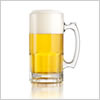Your cart

 World: Craft beer market size reaches USD130.4 billion in 2023, projected to more than double by 2032
World: Craft beer market size reaches USD130.4 billion in 2023, projected to more than double by 2032
The global craft beer market size reached USD130.4 billion in 2023 and could reach USD293.4 billion by 2032, driven by a robust compound annual growth rate (CAGR) of 9.2% from 2024 until 2032, according to a recent report by International Market Analysis Research and Consulting Group (IMARC Group), a market research consultancy, the Asia Brewers Network reported.
The report, titled Craft Beer Market: Global Industry Trends, Share, Size, Growth, Opportunity and Forecast 2024-2032, notes that in geographic terms, Europe is still the largest market segment, but the Asia Pacific region comprising China, Japan, India, South Korea, Australia, Indonesia, among others, is emerging as the largest geographic segment in the market, driven by rapid economic growth, increasing urbanisation, and a growing middle class with disposable income.
The Asia Pacific region is also characterised by a burgeoning young population eager to experiment with new and diverse flavours, breaking traditional beer consumption patterns. China, Japan, and Australia are leading the market expansion, with rising numbers of microbreweries and a growing interest in craft beer culture region-wide.
The global market is experiencing strong growth driven by a growing consumer preference for unique and artisanal beer flavours; an increasing focus on health-conscious choices such as low-alcohol and non-alcoholic beers, and advances in brewing techniques and distribution, according to the report. Across the industry, there is also a steady diversification in flavour profiles and styles targeting a wider range of consumers, particularly among younger demographics.
Technological innovations in brewing processes and supply chain management are also allowing for more consistent quality and flavour innovation, with digital platforms for marketing and distribution enhancing market reach and customer engagement capabilities.
Industry sector collaborations in gastronomy, tourism, and cultural events are increasing. Craft beers are being paired with gourmet foods, enhancing culinary experiences; and are providing a significant draw at festivals and brewery tours, contributing to local tourism and hospitality sectors. Additionally, the use of limited edition and seasonal brews, sometimes with collaboration between breweries, is contributing to market dynamism and more consumer engagement.
Although the sector is still predominantly small-scale microbreweries and brewpubs, the larger traditional breweries are also entering the craft segment either through acquisitions or by launching their own craft-style beers, intensifying competition.
Strong growth in the global craft beer market contrasts with that of the mass-market sector, which is struggling to expand. Changing consumer tastes are favouring more artisanal and unique flavours, and craft beers supply a diverse array of styles and flavours, such as IPAs, stouts, and sours, which cater to a broad spectrum of palates. The appeal of these beers is further heightened by the use of high-quality, often locally sourced ingredients, which resonates with consumers’ growing interest in the origin and quality of what they consume, particularly among millennials and Gen Z consumers.
Currently, the on-trade distribution channel, comprising establishments such as bars, pubs, restaurants, and brewpubs, is the largest distribution segment in the market which can be attributed to the importance of the experiential aspect of consuming craft beer in a social setting, which is highly valued by consumers. It also provides an opportunity for consumers to explore a variety of products, often with the guidance of knowledgeable staff or directly from the brewers in the case of brewpubs. This interactive experience, coupled with the social ambiance of these establishments, greatly appeals to consumers, particularly the younger demographic.
Although the off-trade distribution channel, which includes retail outlets such as supermarkets, liquor stores and online platforms, represents a smaller segment of the market compared to on-trade, it is expanding. There is growing product availability inmainstream retail outlets and more e-commerce platforms specialising in beer delivery.
Furthermore, the tech-savvy 21-35 age group represents the largest segment in the market and shows a strong preference for artisanal and specialty beers. It is also heavily influenced by trends and social media, making them more receptive to marketing campaigns and new product launches.
The 40-54 age group, which enjoys greater spending power, is also a significant portion of the market, but tends to favour more traditional and well-crafted beers, valuing the craftsmanship and history behind the beer, and making them more inclined towards established craft brands with a strong heritage and reputation.
后退
E-malt.com, the global information source for the brewing and malting industry professionals. The bi-weekly E-malt.com Newsletters feature latest industry news, statistics in graphs and tables, world barley and malt prices, and other relevant information. Click here to get full access to E-malt.com. If you are a Castle Malting client, you can get free access to E-malt.com website and publications. Contact us for more information at marketing@castlemalting.com .





